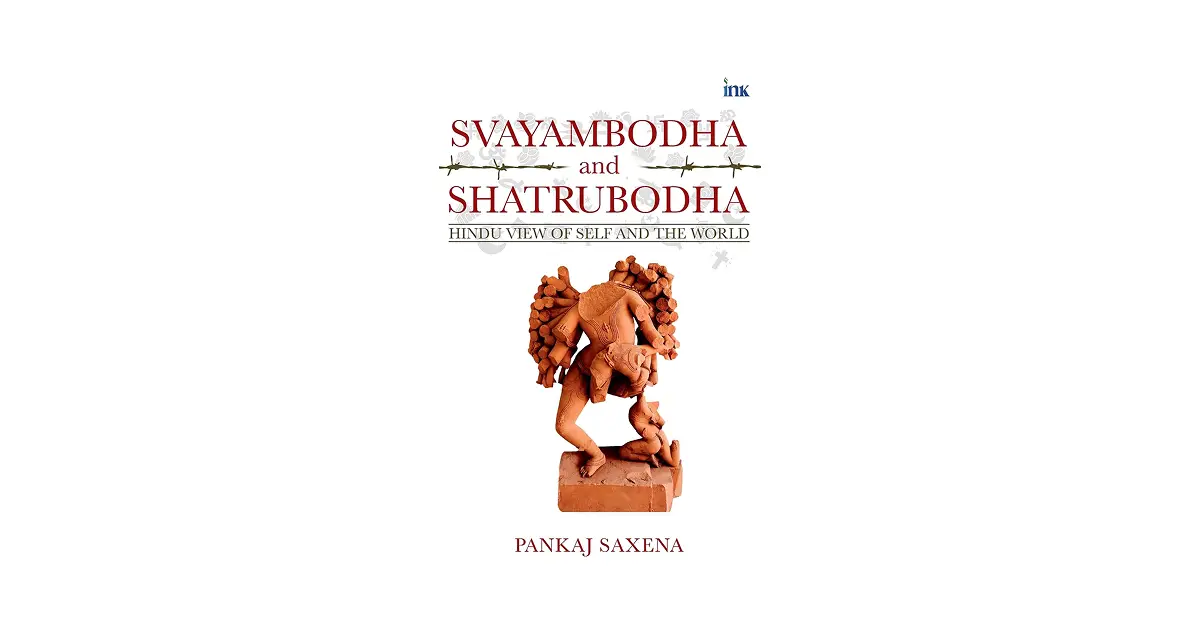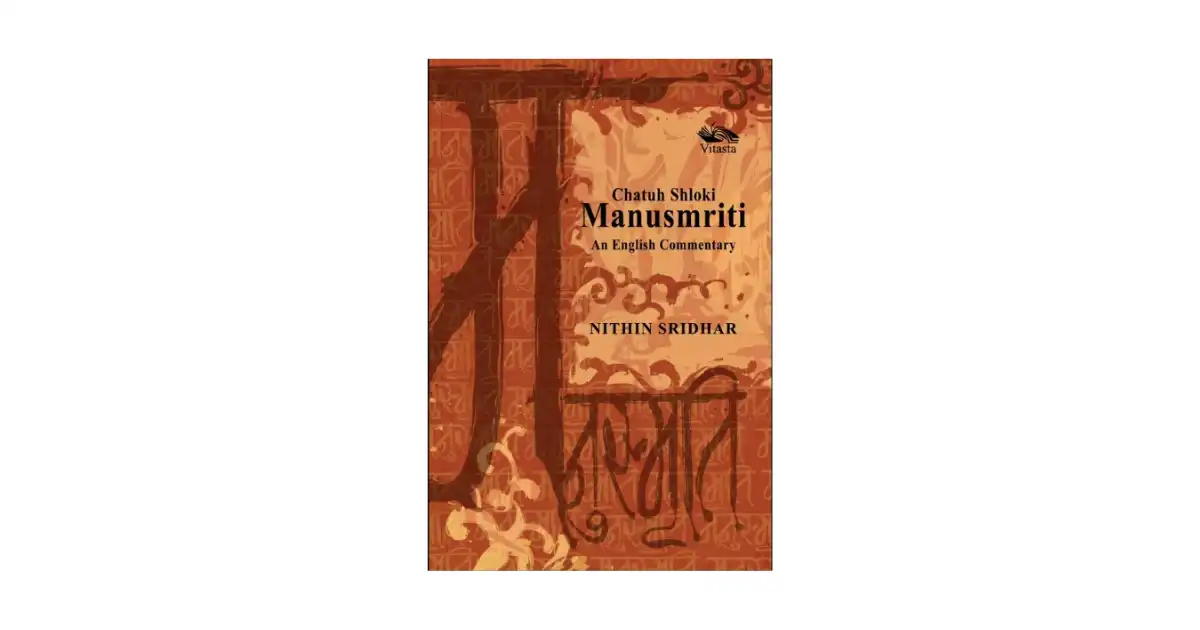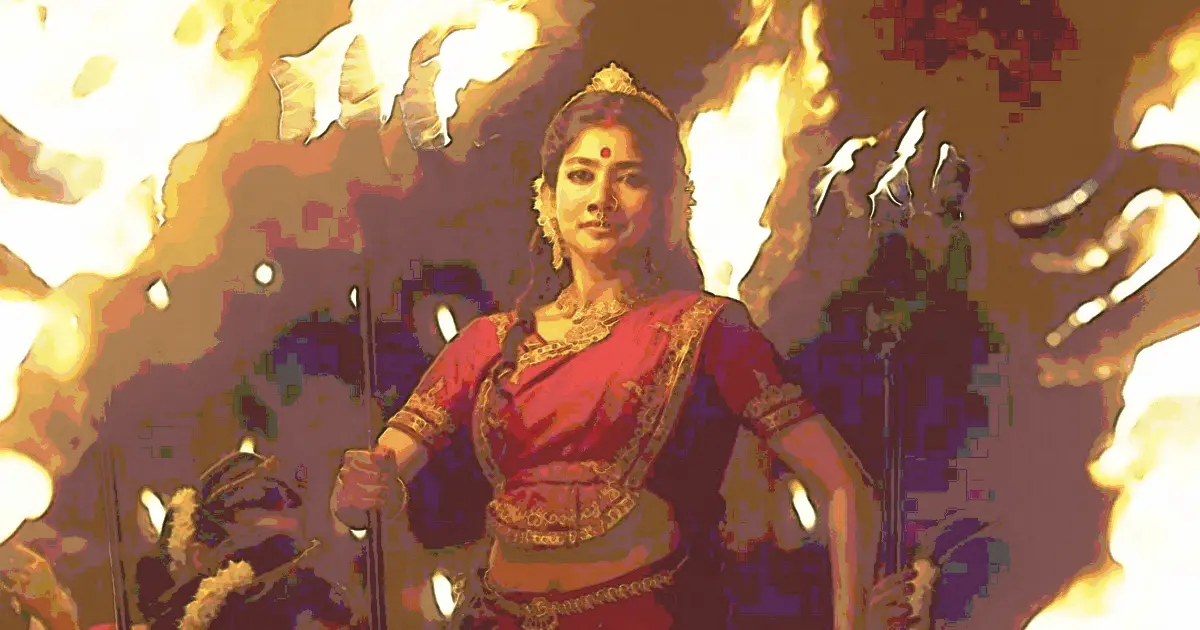“You know, my friends, that between us and the Indian people the great want is the want of a link. We are divided by our religions. There is no amalgamation between the races. There is nothing to twine one within the other and cement our interests. We stand aloof - the heathen on the one side and the Christian on the other - and find nothing in our worldly policy to bridge the space. We shall only find that link in Christianity. If we Christianize one man, we have made one friend. If we Christianize a race, we have got an army. If we Christianize a province, we have founded a government. If we Christianize a people, we have made an empire ... ”
Edwardes Vol. II 1886: 268-69; quoted in Jain, Meenakshi, The British Makeover of India: Indigenous Education and Languages Downgraded
Introduction and Overview
Meenakshi Jain’s
The British Makeover of India: Indigenous Education and Languages Downgraded offers a rigorous historical account of how the British dismantled the indigenous
pāṭhaśāla system—an inclusive and community-supported network of education that had long served children across ‘caste’ lines—and replaced it with an exclusivist and utilitarian structure designed to advance imperial interests. The colonial educational apparatus, Jain argues, was never intended to enrich India’s intellectual traditions but rather to produce a class of intermediaries—clerks, translators, and administrators—who could sustain the machinery of British governance and, over time, facilitate the moral and cultural subjugation of Indian society through Christianization and Anglicization.
As outlined by Jain in her work, during the early phase of East India Company rule, British officials themselves acknowledged the efficacy and vitality of indigenous institutions. Across the presidencies of Madras, Bengal, and Bihar, local schools exhibited striking uniformity in method and organization. Typically, these were modest, one-teacher establishments that served all strata of society. Prior to British intervention, records from Hindu polities had attested to a vibrant educational landscape that included children of all castes—particularly śūdras—and offered instruction not only in language and mathematics but also in economics and the moral narratives of the purāṇas and itihāsa. They were accessible, affordable, and financed through voluntary community contributions; remuneration to teachers often took the form of small gifts or payments in kind rather than formal fees. Jain frequently cites Dharampal and others, who have shown that this system represented an integrated model of intellectual and ethical formation, one that was systematically uprooted in the colonial remaking of India.
Yet this organic, vernacular-based model did not align with the evolving priorities of the empire, and the colonial state sought to erode these autonomous educational institutions. A self-sufficient system that could have been strengthened by integrating modern sciences was instead viewed as an impediment to colonial consolidation. The ideological foundations of this project were laid as early as 1792, when Evangelical reformer Charles Grant proposed a deliberate scheme for the gradual Christianization and Anglicization of India. His scheme, initially resisted by many Company officials who favored the continuation of vernacular instruction to serve other interests, would later find its most forceful executor in the infamous Thomas Babington Macaulay. The main premise of Jain’s book is that by alienating Indians from their linguistic and civilizational foundations, the British weakened indigenous resistance to conversion and strengthened the colonial stronghold.
The Early Surveys and the Systematic Undermining of Indigenous Education
At the dawn of the nineteenth century, the indigenous systems of education in India were, by most contemporary accounts, in a state of considerable vitality. This is not merely a retrospective nationalist assertion but a fact corroborated by official British surveys—beginning with the one undertaken in the Madras Presidency under Governor Thomas Munro. These inquiries revealed a striking degree of consistency in pedagogical practices across regions. In Chapter Three, Jain provides a detailed account of indigenous education through extensive quotations from Company officials, missionaries, and early European travelers. These sources collectively highlight the remarkable functionality and social integration of the pāṭhaśāla system. The archetypal pāṭhaśāla remained a single-teacher institution, serving children from varied social and financial backgrounds, closely attuned to the practical and cultural needs of local communities. Despite their modest means, such schools were self-sustaining, supported primarily through community patronage, and capable of offering a comprehensive curriculum. Instruction occurred in a variety of informal yet respected spaces—temple precincts, verandahs, village courtyards, or beneath the shade of trees—underscoring the adaptability and community orientation of these schools.
Teachers derived no direct financial benefit from their students; their service was considered a moral and civic duty, recognized by ceremonial gifts and social respect. Villagers willingly supported educators, ensuring they received sufficient sustenance while maintaining the system’s independence from profit motives. Central to the pedagogy was the cultivation of memory, which served both intellectual and ethical purposes within the local educational tradition.
Chapter Four shifts focus to the deliberate restructuring of this system under colonial and evangelical imperatives. Jain draws on Dharampal’s work to show that the preparation of Indian language grammars and texts was closely tied to the objective of spreading Christianity. Evangelical reformers sought not only to disseminate knowledge but also to convert, often subtly, the local population. William Wilberforce articulated this goal in Parliament, framing the circulation of scriptures in native languages as a strategy to effect conversion “without [the Indians] knowing it.”
The growing evangelical zeal of missionaries complicated the British stance on education policy, as evidenced in the deposition of W. Keane before the British Parliament, reflected deep frustration with the resilience of Hindu intellectual life: “The Hindus despise our Bible; they do not believe it is the power of God to upset their whole system… They care as little for the Bible in its religious character as we do for Homer.” Such testimonies expose the civilizational antagonism underlying what was officially described as “educational reform.” A few orientalist scholars of the period registered profound unease at this cultural assault. H. H. Wilson, one of the most respected among them, condemned Governor-General William Bentinck and Macaulay for diverting funds from oriental seminaries to English institutions. In his searing indictment, Wilson foresaw the moral and intellectual consequences of this policy:
“By annihilating native literature, by sweeping away all sources of pride and pleasure in their own mental efforts, by rendering a whole people dependent upon a remote and unknown country for all their ideas and for the very words in which to clothe them, we should degrade their character, depress their energies, and render them incapable of aspiring to any intellectual distinction.”
Jain’s account thus situates the British “makeover” of Indian education not as an inevitable byproduct of modernization but as deliberate cultural erasure—conceived in evangelical fervor, sanctioned by imperial policy, and executed at the expense of an organic and remarkably inclusive educational tradition. The underlying strategy of colonial education was to repurpose indigenous linguistic and pedagogical frameworks as instruments for religious and ideological transformation, rather than for the intellectual or social development of the populace.
The Reversal of Vernacular Policy and the Rise of Westernized Education
Chapter Five of Jain’s work examines the initial endorsement of indigenous and vernacular education by the East India Company, consistent with its early non-interference stance. In this period, Company policy actively incentivized local schooling systems, instruction in the vernacular languages, and the expansion of Saṃskṛta learning, recognizing their utility. H. H. Wilson, appointed to design the curriculum for the Saṃskṛta College, articulated a dual objective for the institution: to preserve India’s venerable traditions of science and literature, deeply intertwined with domestic and religious life, while simultaneously introducing European sciences and learning to open “new sources of intellectual and moral improvement.” Wilson’s curriculum incorporated classical Saṃskṛta studies—rhetoric, literature, law, and grammar—alongside modern scientific instruction. The outcomes of this synthesis were complex: alumni such as Ishwar Chandra Vidyasagar emerged as both accomplished Saṃskṛta scholars and social reformers, illustrating the far-reaching Western influence of these institutions. Saṃskṛta education under colonial auspices could serve — intentionally or otherwise — to distance the population from immediate, actionable knowledge and consolidate British control over intellectual life. In the same vein, Raja Rammohan Roy protested the establishment of the Saṃskṛta College in Calcutta. In his correspondence with Lord Amherst, Roy contended that the institution risked “keeping the country in darkness”.
Eventually, when official educational initiatives faltered, missionaries assumed a leading role in expanding schooling. They established institutions, introduced printing technology, and often received partial support from Company officials, who found missionary-led initiatives cost-effective and administratively convenient. This alignment between evangelical aims and imperial expediency further accelerated the shift away from vernacular traditions.
The next chapter is centered around the Governor General Lord William Bentinck and the infamous Macaulay’s educational policies. The chapter also contains incriminating information about the Christianization agenda of the British as articulated by Charles Trevelyan, a colonial administrator and evangelical best remembered for his role in orchestrating the Irish famine by disbursing direct government food and monetary aid to the Irish during the famine (this is not mentioned in Jain’s book). Trevelyan exhibited profound disdain for what he perceived as the moral deficiencies of the Indian populace. In The Application of the Roman Alphabet to All the Oriental Languages (1834), he advocated transliterating indigenous texts into the Roman script, asserting that moral and civic virtues such as “virtue,” “honor,” “gratitude,” “patriotism,” and “public spirit” should be grafted onto Indian languages. He anticipated that this process would sever India’s literary and cultural traditions at their root.
In his tract titled On the Education of the People of India, Trevelyan outlined a systematic plan to promote English as the medium of higher education, reduce the influence of classical languages in public life, and rely on vernaculars primarily for local administration, as he saw vernaculars as impediments to progress. Trevelyan’s proposals reveal a profound cultural insensitivity: he failed to recognize the deeply entrenched attachment of millions of Indians to their languages, literatures, and religious traditions, and overlooked the potent resilience of indigenous social and intellectual life in resisting the imposition of Western models.
Macaulay and English Education
Jain’s account of Thomas Babington Macaulay’s education policy highlights the far-reaching ambitions underlying British reform in India. The core propositions of Macaulay’s Minute on Indian Education sought the systematic replacement of Persian with English as the official language and mandated English as the medium of instruction across all institutions of learning. Macaulay envisaged a transformative process whereby a relatively small class of Indians, educated in Western knowledge and sciences, would, within two decades, cultivate vernacular literature of quality and subsequently oversee the education of their countrymen. Drawing a parallel with European experience, he asserted that Western languages had “civilized Russia” and would exert a similar civilizing influence upon Hindus.
The colonial administration led by Governor-General Lord Auckland formalized this agenda in 1841. Funds previously allocated to oriental colleges were redirected exclusively to support institutions aligned with the government’s objective of disseminating English education, following the resolution of 7 March 1835. This marked a decisive shift from earlier policies that had tolerated or encouraged vernacular and classical instruction.
Missionaries and educational reformers such as Charles Wood and Alexander Duff amplified this strategy, advocating for the abolition of oriental colleges and the integration of Christian instruction as an essential component of “enlightened education.” For Duff, secular English education was insufficient: it had to be inseparable from Christian moral and spiritual instruction to achieve both civilizing and imperial aims. Duff’s biographer observes that his objective was the systematic “destruction of Hindooism, and the Christianization of the hundred and thirty millions of Eastern and Northern India.” In Duff’s conception, higher English education and the inculcation of Christian values were mutually reinforcing instruments for consolidating British dominion while promoting what colonial authorities termed the welfare of the native population.
Beyond ideological and religious goals, the colonial educational project also served material interests. Official despatches acknowledged that English-educated Indians would facilitate the development of India’s resources to benefit Britain, ensuring a reliable supply of raw materials for manufacturing and sustaining domestic demand for British-produced goods. Jain’s treatment underscores that the design of colonial education was therefore dual-purpose: to restructure intellectual and moral life in accordance with Western and Christian norms, while simultaneously integrating India into a global economy designed to enrich the metropole.
Missionaries in India: Early Restrictions, Expansion, and Educational Strategies
“if India is given to Christian England as a sacred trust, for the very purpose of carrying to it the Bible, and imparting the truths of Christianity and the benefits of an enlightened administration founded on Christian principles; if there be but one true God and one true religion, and all others be false; then it appears to me that our Government cannot possibly recognize an equality of religious instruction... To the millions of Indians let us prove we have higher objects than additions of territory or accumulations of wealth. Let us aim at the overthrow of idol temples ... by affording means to know the truth.”
Henry Carre Tucker, Commissioner and Agent to the Governor General at Banaras, 1853-1858 (cited by Jain; Penner 1986: 241-42)
The second section of Jain’s book examines the complex and evolving role of Christian missionaries in colonial India, tracing their initial limitations, gradual authorization and increasingly aggressive educational and proselytizing activities.
In the early years, the Charter Act of 1792 contained no provision permitting missionary activity within Company territories. Missionaries often arrived clandestinely, risking deportation, and relied on the support of Evangelical figures such as Charles Grant to secure unofficial entry into Calcutta. Early efforts by figures like Rev. Claudius Buchanan and the Church Missionary Society encountered resistance from both the colonial administration and local communities, particularly in the aftermath of the Vellore Mutiny of 1806. Senior officials, including Sir George Barlow, attributed unrest among sepoys in part to missionary agitation, resulting in formal restrictions: missionaries were prohibited from preaching, distributing religious tracts, or actively attempting conversions.
The situation shifted with the return of Charles Grant and Edward Parry to the Company’s leadership in 1807. They successfully defended missionary activity, emphasizing that Christianity could serve as a stabilizing political influence, aligning Indian subjects with British authority through shared religious principles. Grant argued that historical Christian presence in southern India—through Danish Protestant, Roman Catholic, and Syrian Christian communities—had not produced revolt, and he attributed disturbances like the Vellore Mutiny to local grievances and external agitators rather than missionary action.
Formal authorization arrived with the Charter Act of 1813, which permitted missionaries to reside, preach, establish churches, and discharge all spiritual duties in India. This legal recognition facilitated the expansion of missionary work, including the establishment of schools and the introduction of printing presses. However, the increasing assertiveness of missionaries generated tensions: some openly insulted Hindu deities, denounced idolatry, and critiqued local customs. Examples include Joshua Marshman, Rev. Richards, and Rev. C. F. Worth, who combined scriptural instruction with pointed attacks on Hindu beliefs and practices. These activities provoked unrest, as in the 1845 Tinnevelly riots, where local authorities identified missionary provocations and administrative complicity as contributing factors.
Missionary education also morphed with time. Initially, it was focused on elementary instruction in vernacular languages, mostly targeting the lower strata of society. This approach included grammar studies, dictionaries, and Bible translations to facilitate literacy and religious instruction. By the 1830s, however, the focus shifted toward secondary schools and colleges using English as the medium of instruction. This transition served two purposes: to expose ‘higher-caste’ Hindus to Western knowledge and science, and to encourage conversion among those with access to education and influence. German missionary from Church Mission Society, C. T. E. Rhenius (who later came to be known as the “Apostle of Tirunelveli”) exemplifies the scale and strategy of this educational expansion. Between 1820 and 1835, he established 107 elementary schools (enrolling nearly 2,900 students, including women), two secondary schools, and a training college. Rhenius’s reports celebrated the growth of literacy and conversion, noting that many individuals, while remaining nominally non-Christian, increasingly acknowledged the inadequacy of their traditional religious practices and engaged with Christian teachings. Jain writes that “[by] 1858, the year when Company rule ended, fourteen missionary societies had a total of around 500 schools in southern India with 38,607 students”.
Jain highlights how missionary activity evolved from marginal, sometimes clandestine operations into a systematic educational and proselytizing enterprise. Their work was both a vehicle for Western education and a mechanism for cultural and religious intervention, ultimately intertwining the spread of literacy with the promotion of Christianity and colonial governance.
Expansion of Missionary Influence in the North-Western Provinces and Punjab
Chapter Sixteen examines the growing integration of Christian missionary activity into colonial educational policy in the North-Western Provinces and Punjab. Jain details how officials such as James Thomason and John Russell Colvin moved beyond mere neutrality to active support for missionary initiatives. Thomason, an Evangelical, acknowledged a personal moral imperative to promote Christian instruction, describing in correspondence with Henry Venn his desire for “active Christian instruction” integrated with secular learning. While he attempted to maintain a distinction between private belief and official duty, his personal convictions increasingly shaped administrative decisions.
Missionary schools were systematically encouraged, and in some cases, government-supported institutions were withdrawn when they competed with missionary-run establishments. By 1854, nearly half of the students in Anglo-Vernacular schools and colleges of the North-Western Provinces were enrolled in missionary institutions. This demonstrates both the extent of missionary influence and the ungodly collaboration between Evangelicals and colonial administrators.
In Punjab, the policy of religious neutrality was effectively abandoned, particularly following the 1857 revolt. Officials believed that the promotion of Christianity would consolidate British authority. John Lawrence advocated the cautious introduction of the Bible in schools, arguing that voluntary exposure to Christian texts would strengthen imperial control without provoking overt resistance. Correspondence with William Arnold reinforced this dual objective: the dissemination of Christianity was framed both as a moral duty and as a tool of governance, designed to gradually win the assent of the local population.
Under the Lawrence brothers—Henry and John—evangelical officers such as the Muirs, Thorntons, Tuckers, Montgomery, McLeod, and Herbert Edwardes actively promoted missionary activity. Their influence, combined with the rising presence of officials trained at Haileybury College who openly affirmed Evangelical Christianity, gradually entrenched the Evangelical position within the colonial administration. These officers framed India as a “sacred trust” for Christian England, asserting that the spread of the Bible and Christian principles should take precedence over mere territorial expansion or economic gain. They explicitly aimed at undermining local religious practices, including the closure of idol temples, as part of a broader strategy to align governance with Christian moral and educational objectives.
Through detailing these developments, Jain demonstrates that the mid-nineteenth century saw missionary education evolve from marginal or semi-official activity into a central instrument of British policy, combining the goals of literacy, religious conversion, and imperial consolidation.
The Persian-Hindi-Urdu Debate and the Politics of Language
The next section of Jain’s book traces the historical evolution of Hindavi and the deliberate creation of Urdu, highlighting the cultural, religious, and political factors that shaped language in colonial India. For over six centuries, Hindavi developed organically as a syncretic language blending Sanskritic and Persian elements. By the late seventeenth century, a concerted effort emerged to purge Hindavi of its Sanskritic roots and infuse it with Persian and Arabic vocabulary, giving rise to what came to be called Urdu.
The creation of Urdu was closely linked to the Muslim elite’s desire to assert a distinct cultural identity following the decline of Mughal authority. Observers such as Altaf Husain Hali and Abdul Haq noted a striking correlation between the rise of Urdu poetry and the waning of Mughal political power, suggesting that the language served as a marker of social and cultural continuity for a displaced elite. The Naqshbandi Sufi order and reformist movements led by figures like Shah Waliullah played a pivotal role in this linguistic and religious reorientation, which involved a systematic separation of Urdu from the broader Hindavi linguistic continuum. Missionary accounts also reflect the linguistic differentiation between Hindus and Muslims. John Chamberlain, writing from Serampore in 1803, distinguished between Hindavi, spoken by Hindus, and Hindustani—or Urdu—spoken by Muslims. Subsequent lexicographical work, such as S. W. Fallon’s A New Hindustani-English Dictionary (1866), further codified Urdu as the language of the Muslim population.
In colonial and nationalist contexts, Urdu became emblematic of Muslim identity, particularly within the Muslim minority of Uttar Pradesh. Despite claims by the Aligarh Movement and the Muslim League, Urdu-speaking populations were geographically limited, and the language never represented a majority in any province of undivided India. Meanwhile, Hindi, as the inheritor of the indigenous linguistic tradition, emerged as the central focus of nationalist efforts to assert cultural continuity. Jain’s striking analysis underscores that the Persian-Hindi-Urdu debates were far more than seemingly superficial linguistic disputes; they were instruments of religious conflict, colonial administrative strategy, and identity formation.
Conclusion
Meenakshi Jain’s second book in the British Makeover of India series offers a detailed and meticulously researched account of the colonial transformation of India’s educational landscape. The book situates the story within the broader civilizational context, showing how education in India was historically rooted, community-based, and philosophically oriented.
It is indisputable that a fully developed indigenous tradition of education flourished in India well before the Common Era. Learning was comprehensive, encompassing a wide range of subjects as recounted by Nārada, and was valued as a pursuit leading to the highest ends of life rather than the acquisition of material wealth (Mookerji 1947). As the Mahābhārata enunciates:
नास्ति विद्यासमं चक्षुः नास्ति सत्यसमं तपः।
नास्ति रागसमं दुःखं नास्ति त्यागसमं सुखम्॥ (XII. 339.6).
“There is no eye equal to knowledge; there is no penance parallel to truth;
there is no pain like attachment; there is no happiness like renunciation.”
Over time, education became deeply rooted in villages, supported by temple colleges and agrahāras, a model that endured for millennia. Colonial surveys of the nineteenth century confirm the resilience and efficacy of this vernacular-based village system. Jain carefully charts how British educational policy sought to reshape indigenous pedagogical structures and also underscores the enduring legacy of said interventions. Even after independence, vernacular education struggles against the rise of English-medium schools that attract weaker sections of society with promises of access to power. Village-based schools, once self-sufficient and deeply connected to local communities, have disappeared, only to be replaced either by grossly inadequate and inferior versions or, at times, by a vacuum. Moreover, standardizing curricula has detached schools from local needs and societal contexts.
From a critical perspective, the book has some structural limitations. Its extensive use of excerpts from colonial reports, missionary writings, and contemporary accounts can make the reading experience disjointed, requiring the reader to reconstruct chronology and argumentation independently. A more cohesive narrative and focused analysis would have allowed Jain’s voice—her perspective as a renowned historian of modern India—to guide the reader more explicitly through the source material. Nevertheless, the book remains an invaluable resource, especially for its documentation of the British strategy to dismantle indigenous languages and educational structures in favor of missionary and English-centric schooling. Overall, Jain’s work is a significant contribution to the series, offering deep insights into the colonial project in education and its long-term consequences for Indian society.







